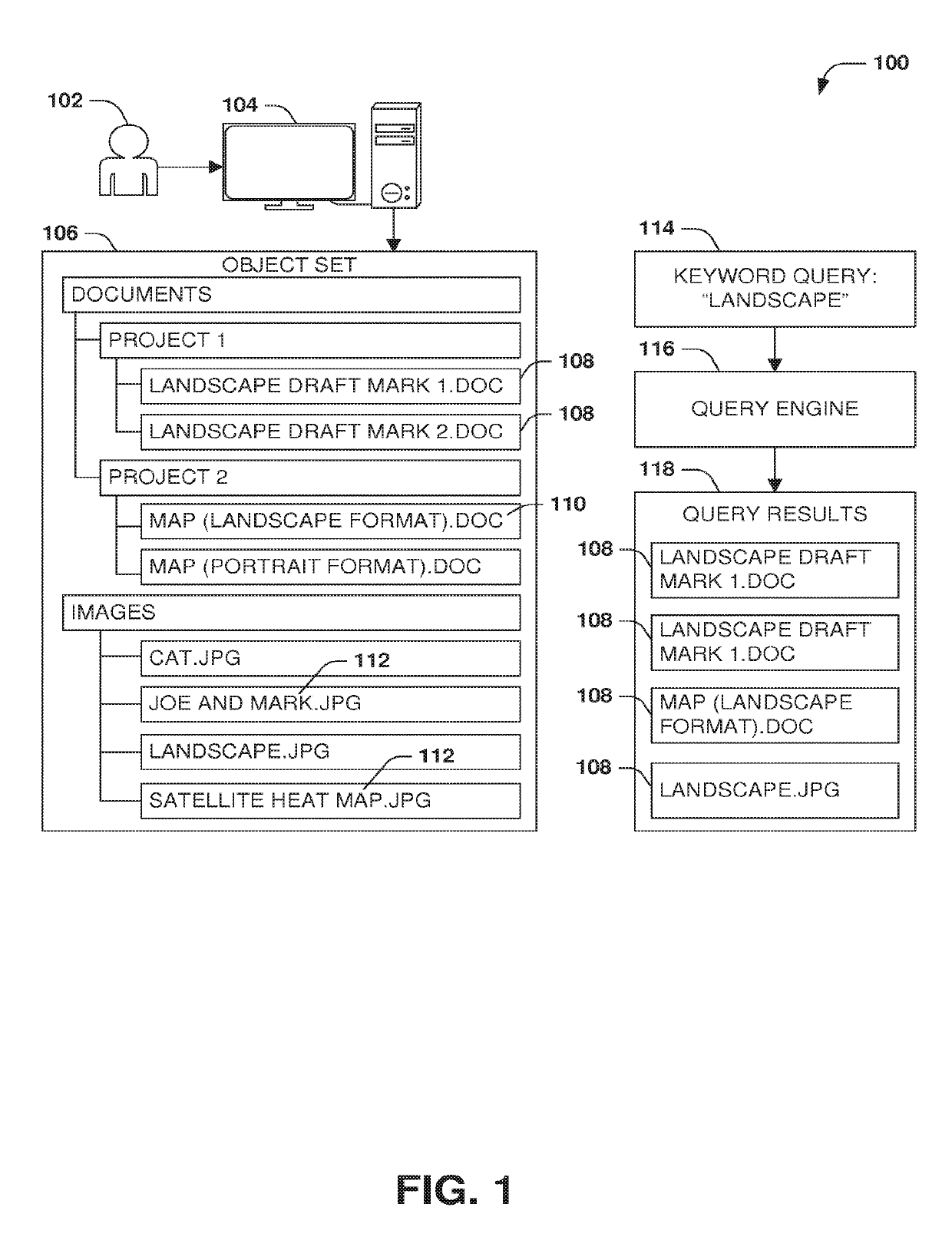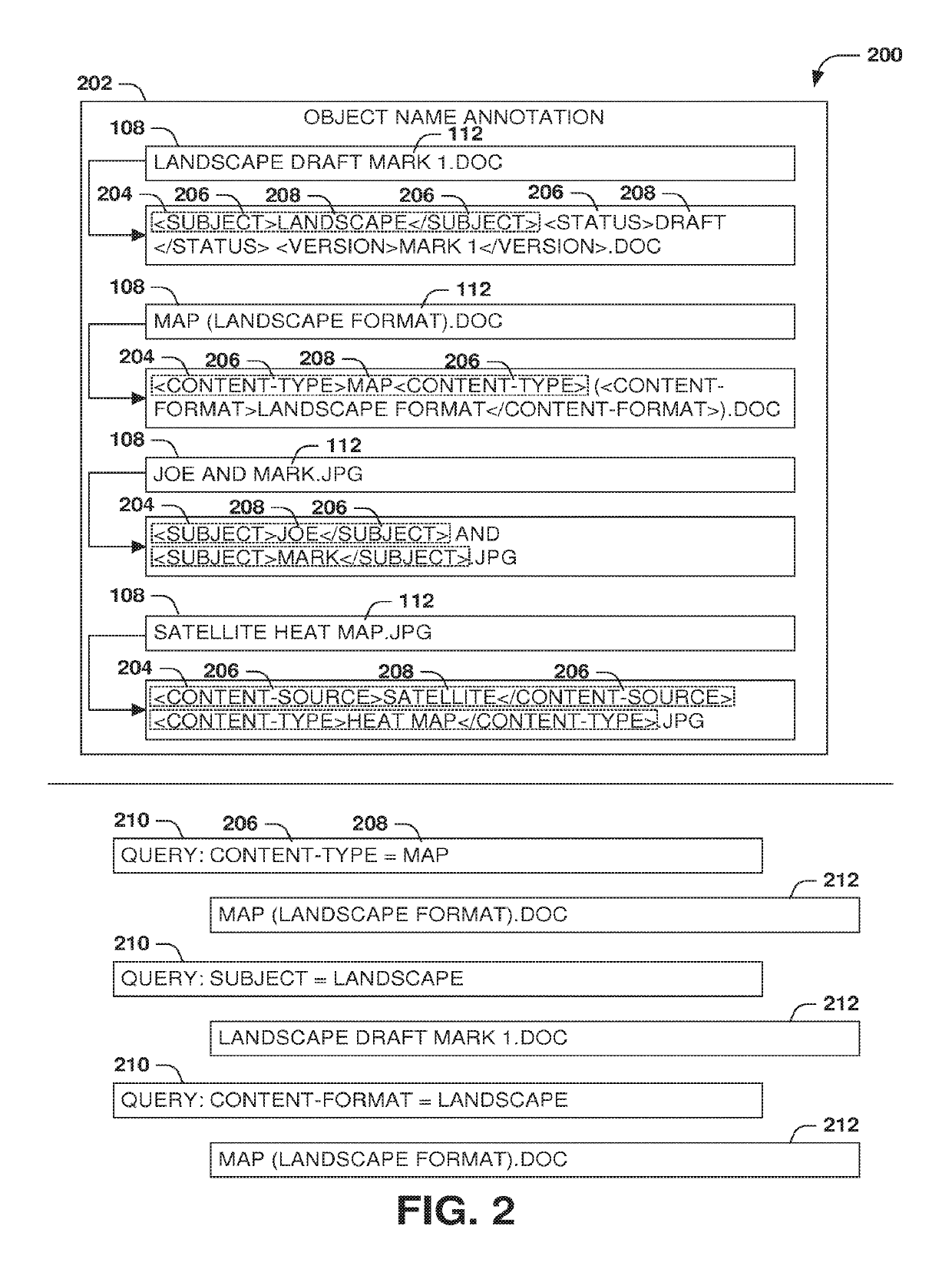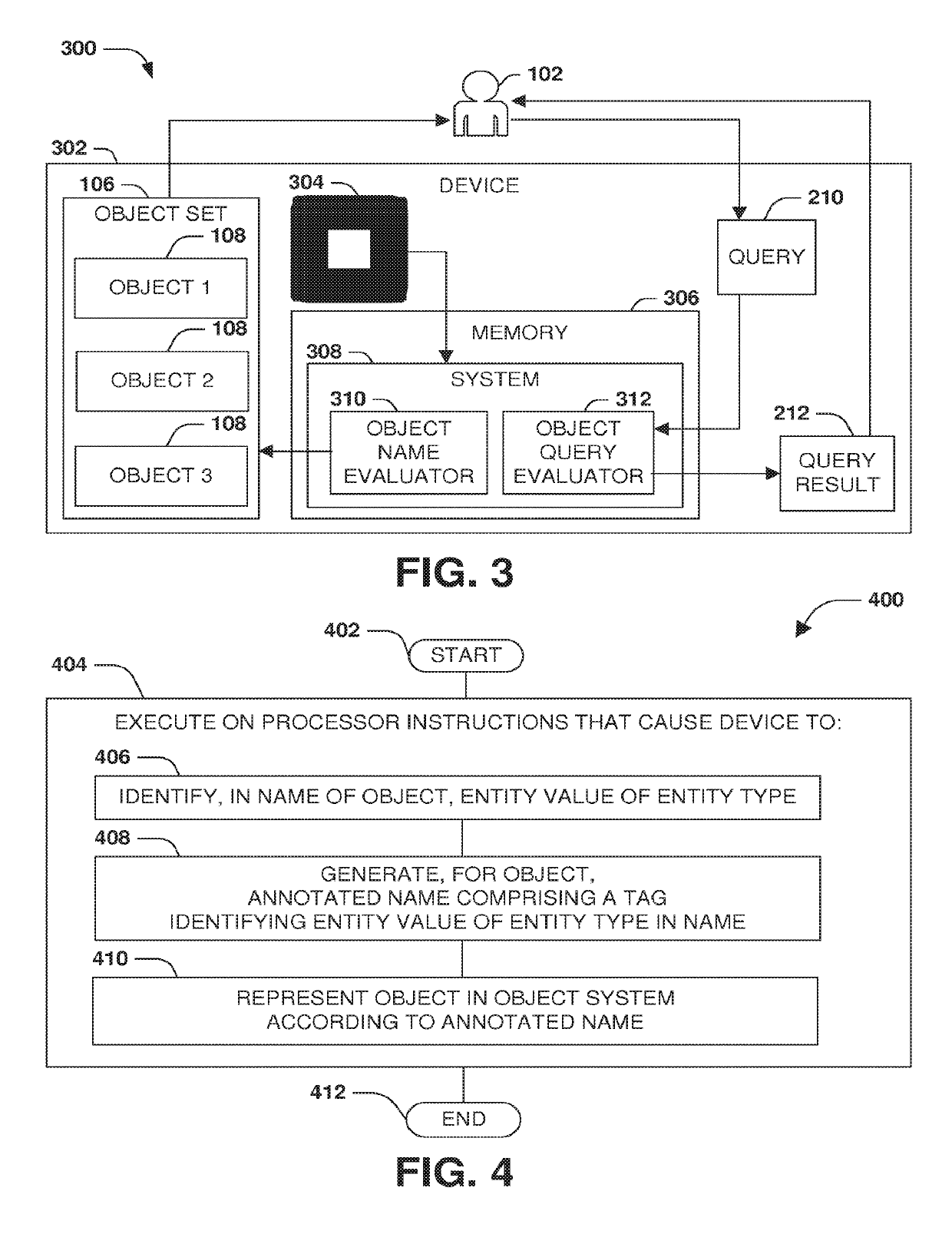Semantic object tagging through name annotation
a name annotation and semantic object technology, applied in the field of semantic object tagging through name annotation, can solve the problem that the metadata for an object b>108/b> may no longer be available, and achieve the effect of facilitating the discoveryability of objects, accurate and robust object query fulfillment, and reducing user dependency
- Summary
- Abstract
- Description
- Claims
- Application Information
AI Technical Summary
Benefits of technology
Problems solved by technology
Method used
Image
Examples
Embodiment Construction
[0020]The claimed subject matter is now described with reference to the drawings, wherein like reference numerals are used to refer to like elements throughout. In the following description, for purposes of explanation, numerous specific details are set forth in order to provide a thorough understanding of the claimed subject matter. It may be evident, however, that the claimed subject matter may be practiced without these specific details. In other instances, structures and devices are shown in block diagram form in order to facilitate describing the claimed subject matter.
A. INTRODUCTION
[0021]FIG. 1 is an illustration of an example scenario 100 featuring a naming of objects 108 in an object set 106. In this example scenario 100, a user 102 of a device 104 organizes an object set 106 containing objects 108 that represent files that are of interest to the user 102, such as documents comprising maps and reports and images of various people and places. The respective objects 108 have ...
PUM
 Login to View More
Login to View More Abstract
Description
Claims
Application Information
 Login to View More
Login to View More - R&D
- Intellectual Property
- Life Sciences
- Materials
- Tech Scout
- Unparalleled Data Quality
- Higher Quality Content
- 60% Fewer Hallucinations
Browse by: Latest US Patents, China's latest patents, Technical Efficacy Thesaurus, Application Domain, Technology Topic, Popular Technical Reports.
© 2025 PatSnap. All rights reserved.Legal|Privacy policy|Modern Slavery Act Transparency Statement|Sitemap|About US| Contact US: help@patsnap.com



